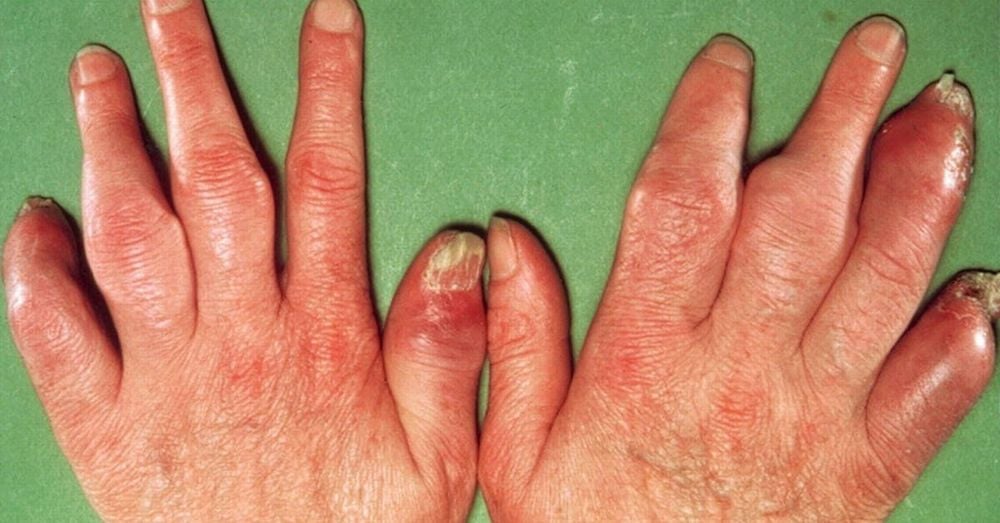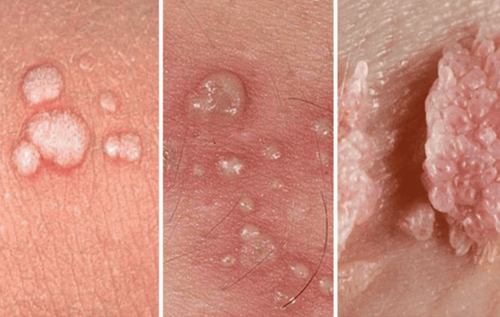This is an automatically translated article.
Smallpox is one of the most dangerous infectious diseases in humans. It can cause dangerous complications to the patient's health, and can even lead to death if not treated promptly. Currently, we do not have a specific treatment for this disease, but smallpox is completely preventable through vaccination.1. Smallpox overview
Smallpox is one of the most dangerous infectious diseases in humans, capable of killing about a third of its victims, and disfiguring and disabling those fortunate enough to survive. through disease. Through the pictures on the internet, you have enough to understand what smallpox looks like and how serious it is.Smallpox is also known as Variola vera (in Latin), or Smallpox (English) to distinguish it from syphilis (Great pox). This contagious disease is caused by two viruses, Variola major and Variola minor.
The World Health Organization has described smallpox as one of the most devastating infectious diseases known to mankind in history. For centuries, epidemics repeated themselves, sweeping across continents, ravaging populations and changing the course of history.
In addition, WHO also notes that smallpox is the leading cause of death among infants in some ancient cultures, even customarily not naming infants. until this child got sick and survived the illness.
Smallpox first appeared around 10,000 BC. The remains of this disease have been found in the form of pustules on the mummy of Pharaoh Ramses V from Ancient Egypt. In the late 18th century, smallpox claimed the lives of nearly 400,000 people in Europe each year.
Moreover, this is also the leading cause of blindness (accounting for about 1/3). Of those infected, more than half of the cases are children. According to research, in the 20th century, the number of people dying from smallpox reached hundreds of millions. This has shown us how dangerous this disease is.
Smallpox usually affects the small blood vessels in the mouth, skin and throat. Smallpox-affected skin develops a rash with raised nodules and pus-filled blisters that can leave pitting scars as the disease heals.
Generally, the Variola major virus causes more severe smallpox than the Variola minor virus. They can lead to death if the patient is not treated promptly.
Even when infected with the Variola major virus, they can cause conditions such as pitting scars on the face, or scarring of the cornea leading to blindness. Men with smallpox are at high risk of infertility and difficulty conceiving. In certain cases, smallpox can cause disfigurement in the limbs as a complication of arthritis or chronic osteomyelitis.

Trong một số trường hợp nhất định, bệnh đậu mùa có thể gây biến dạng ở các chi do biến chứng viêm khớp hoặc viêm xương mãn tính
2. Common symptoms of smallpox
In general, the incubation period for smallpox usually lasts about 12 days until the first symptoms appear. Once the Variola major virus enters the body, they will quickly attack areas such as the throat, respiratory mucosa, then go to the lymph nodes and begin to multiply and grow strongly. From the 12th day onwards, through diagnostic tests we can detect a certain amount of smallpox virus in the blood, bone marrow, spleen and lymph nodes.The initial symptoms of smallpox are the same as those of some other viral illnesses, such as the common cold. The most common symptoms of smallpox include:
Fever above 38.5 °C Headache, muscle aches or body aches Feeling of discomfort and fatigue When the body's digestive system is affected The effect will make the patient feel nauseous or vomiting Back pain At the end of the pre-illness stage, red rashes (enanthem) appear in typical areas such as the mouth, palate, tongue and throat. They form nodules on the surface of the skin with a lot of pus inside.
Meanwhile, the body's fever has gone and returned to normal body temperature. After about 3 weeks, these nodules will crust over and peel off, leaving concave scars on the patient's skin.

Sốt, đau đầu, đau lưng,... là những triệu chứng phổ biến của bệnh đậu mùa
3. Classification of smallpox
Depending on the progression, smallpox will be classified into 4 different types, including common, palliative, malignant and hemorrhagic. Malignant and hemorrhagic types usually result in the highest risk of patient mortality.Common smallpox Common smallpox is the most common type of smallpox, usually seen in people who have never been vaccinated against smallpox. For this type of smallpox, the rash will develop into nodules on the second day, which will then fill with pus on the inside and turn into blisters.
Within 24-48 hours, the pus will become more concentrated and turn cloudy. In about 10 days, the pus-filled nodules will develop to a maximum extent, when touched, there is a tight feeling like small particles under the skin. They then begin to collapse, crust over, and slough off, causing scars.
For common smallpox, the rash is most often distributed on the face, or extremities. It also tends to be more prominent on the palms of the hands or soles of the feet.
Mitigated smallpox In contrast to common smallpox, mitotic smallpox develops very rapidly, occurring mainly in people who have been vaccinated with the smallpox vaccine.
Besides, the symptoms of mild smallpox are usually less severe than those of common smallpox. This means that, although it progresses very quickly, it causes less damage to the skin and is very rarely fatal. Sometimes, this form of the disease can be confused with chickenpox.
Malignant smallpox This smallpox occurs quite often, mainly in children, but the severity it brings to the patient is often very high. Malignant smallpox can be accompanied by dangerous symptoms such as persistent fever, blood poisoning, and a rash on the tongue, or palate.
Skin lesions caused by malignant smallpox usually progress quite slowly. When the nodules shrink, it can lead to pitted scars. Unlike the common smallpox vesicles, malignant smallpox blisters usually contain very little pus, are tender to the touch, and sometimes contain blood. This condition is nearly fatal for most infections.
Hemorrhagic smallpox is a serious form of smallpox that can lead to severe bleeding under the skin, mucous membranes and in the stomach tube. However, this type of smallpox usually accounts for very little incidence and occurs mainly in adults.
Hemorrhagic smallpox usually does not appear as papules on the skin, instead, the patient will have a hemorrhage under the skin, meaning the skin looks like black or burned.
Therefore, hemorrhagic smallpox is also known as black spot disease. In addition, the disease can cause hemorrhagic spots in the kidneys, spleen, muscles, serosa, and sometimes in the liver, ovaries, testicles, and bladder. By the 5th or 7th day of illness, the patient may die suddenly, while the manifestations of damage occur very little.

Bệnh đậu mùa sẽ được phân thành 4 loại khác nhau, bao gồm loại thông thường, giảm nhẹ, ác tính và gây xuất huyết
4. How is smallpox transmitted?
Smallpox is usually transmitted through contact with secretions from the nose, throat, or mucous membranes of an infected person. In general, for the disease to spread from person to person, the time of face-to-face contact with the sick person is relatively long, the contact distance is usually 1.8m.In addition, the smallpox virus can be transmitted through the air in crowded public spaces, such as trains, buses, or the same building. Occasionally, it is also transmitted through childbirth, but the incidence of this disease in babies is relatively low.
It is important to note that the smallpox virus is not transmitted during the presymptomatic period, but tends to spread when the patient begins to develop the rash, or has concomitant sores in the throat and mouth. The contagiousness of the disease will gradually decrease between 7-10 days after the rash crusts over. However, not so that the patient becomes subjective, because the disease can still be contagious until the last nodule scabs and falls off.
In general, this is a highly contagious disease, but the rate of infection is quite slow and less widespread than other infectious diseases also caused by a certain virus. In temperate countries, smallpox tends to develop most in winter and spring, whereas in tropical countries it can develop year-round.
In addition, the age at which smallpox is contracted depends in part on the health of the body's immune system. That's why it's so important to get vaccinated, to help protect us all from this dangerous disease of smallpox.
5. The introduction of smallpox vaccine

Dù chưa thể điều trị bệnh nhưng hoàn toàn có thể phòng ngừa đậu mùa bằng việc tiêm vắc-xin
Introducing germs to boost immunity may seem like a new idea behind vaccination, but it's actually been around for centuries. The history of smallpox shows that this idea has been around for a long time.
In China, in the 12th century, it was noticed that children who survived smallpox never got the disease again. To deal with a mild case of smallpox and create immunity against this dreaded disease, the idea was to inhale a powder made from smallpox flakes.
This method is known as varicella, which has spread throughout Asia and Africa. The methods of inoculating smallpox vary from region to region, for example the Persians would swallow powder from smallpox scales, while the Turks and North Africans would rub smallpox pus into skin scraps. After all, these methods of inoculating smallpox all have the same goal of dealing with smallpox.
Today, scientists have developed a smallpox vaccine, called Vaccinia. This vaccine contains a virus that is related to the virus that causes smallpox. However, when using the vaccine, it will not be able to lead to smallpox, and even help the body's immune system increase its ability to fight the disease.
In general, the smallpox vaccine given in its first shot will provide protection against the virus that causes it for about 3-5 years.
Vinmec International General Hospital is one of the hospitals that not only ensures professional quality with a team of leading medical doctors, a system of modern equipment and technology. The hospital provides comprehensive and professional medical examination, consultation and treatment services, with a civilized, polite, safe and sterile medical examination and treatment space.
Please dial HOTLINE for more information or register for an appointment HERE. Download MyVinmec app to make appointments faster and to manage your bookings easily.
Article referenced source: Babycenter.com












